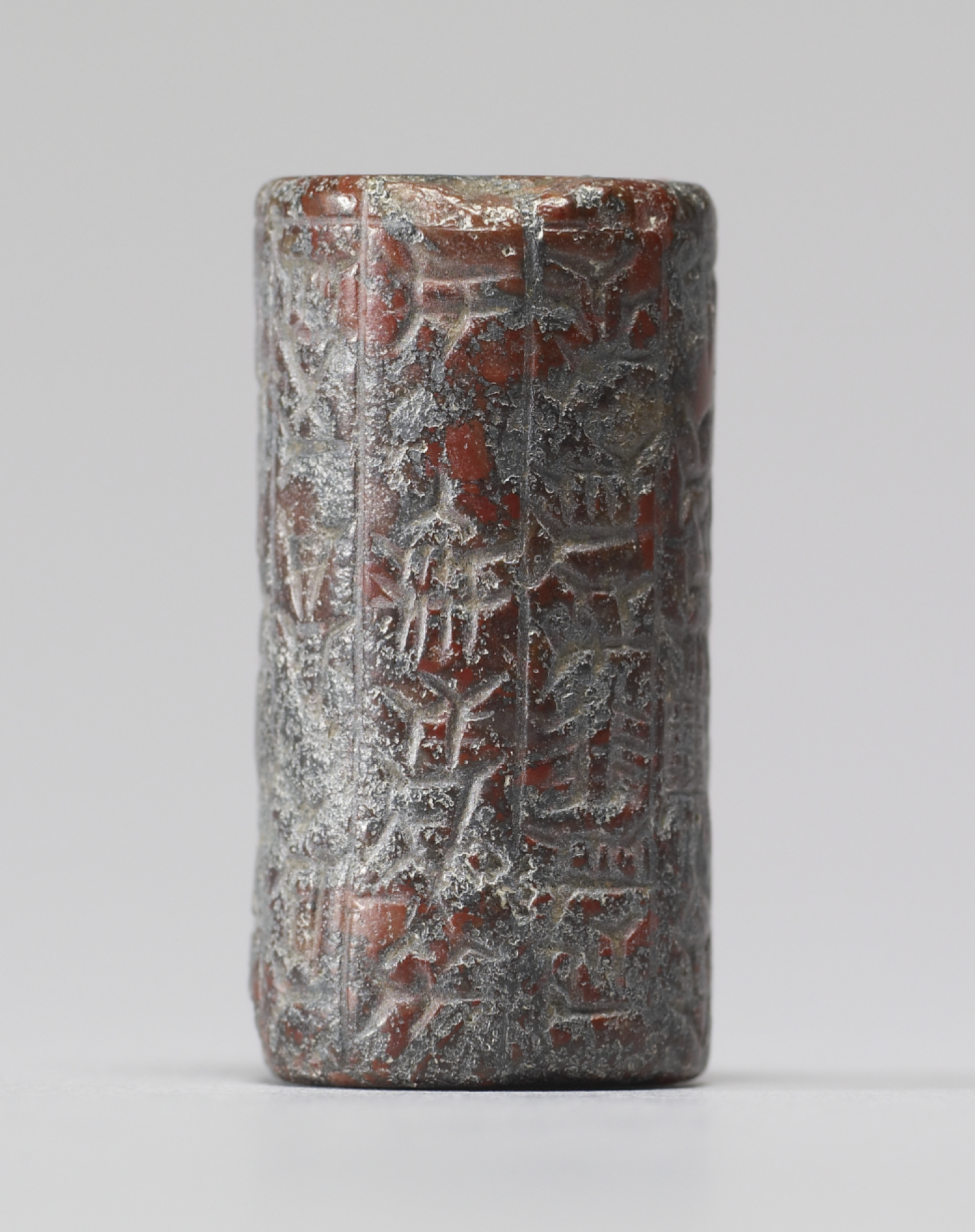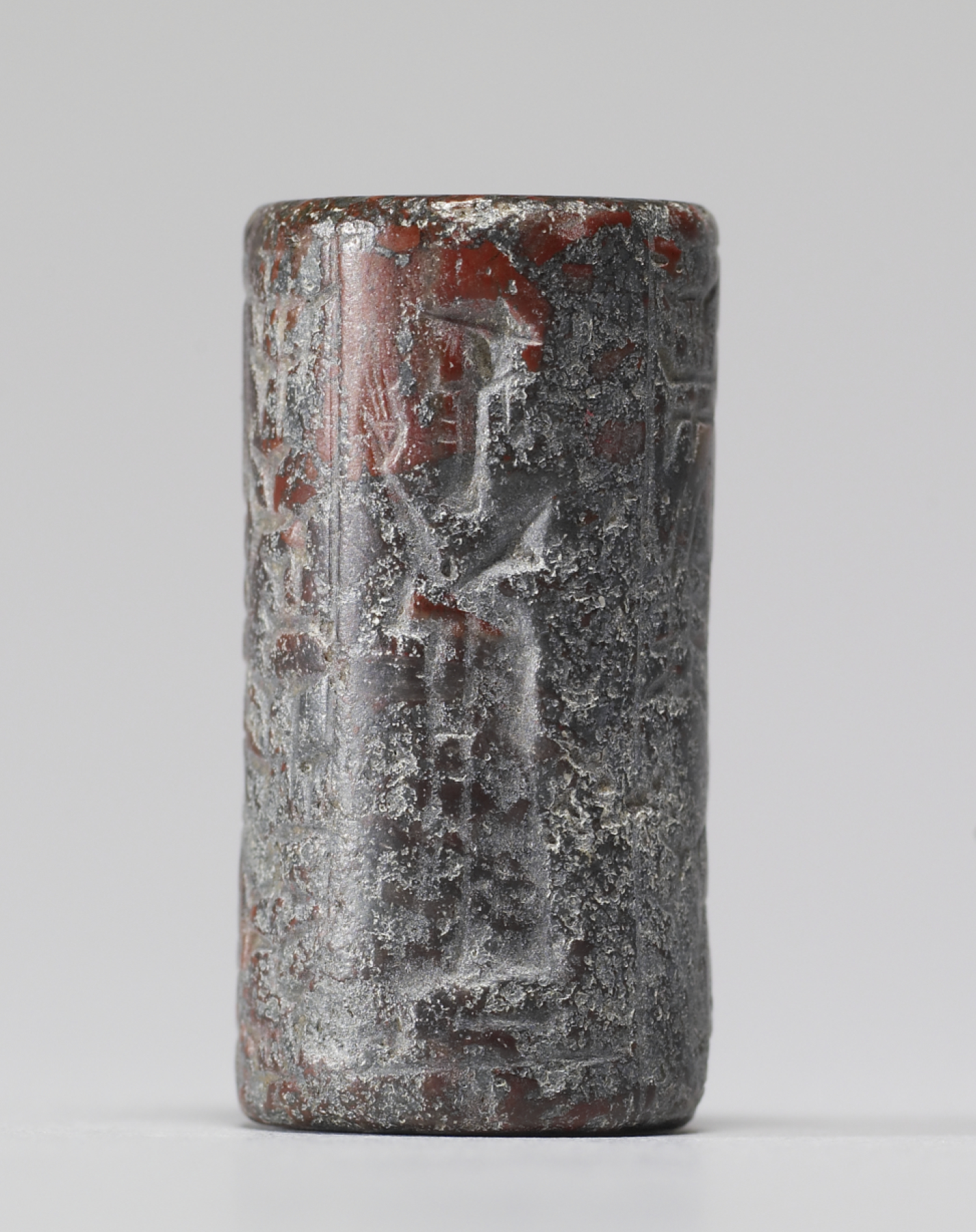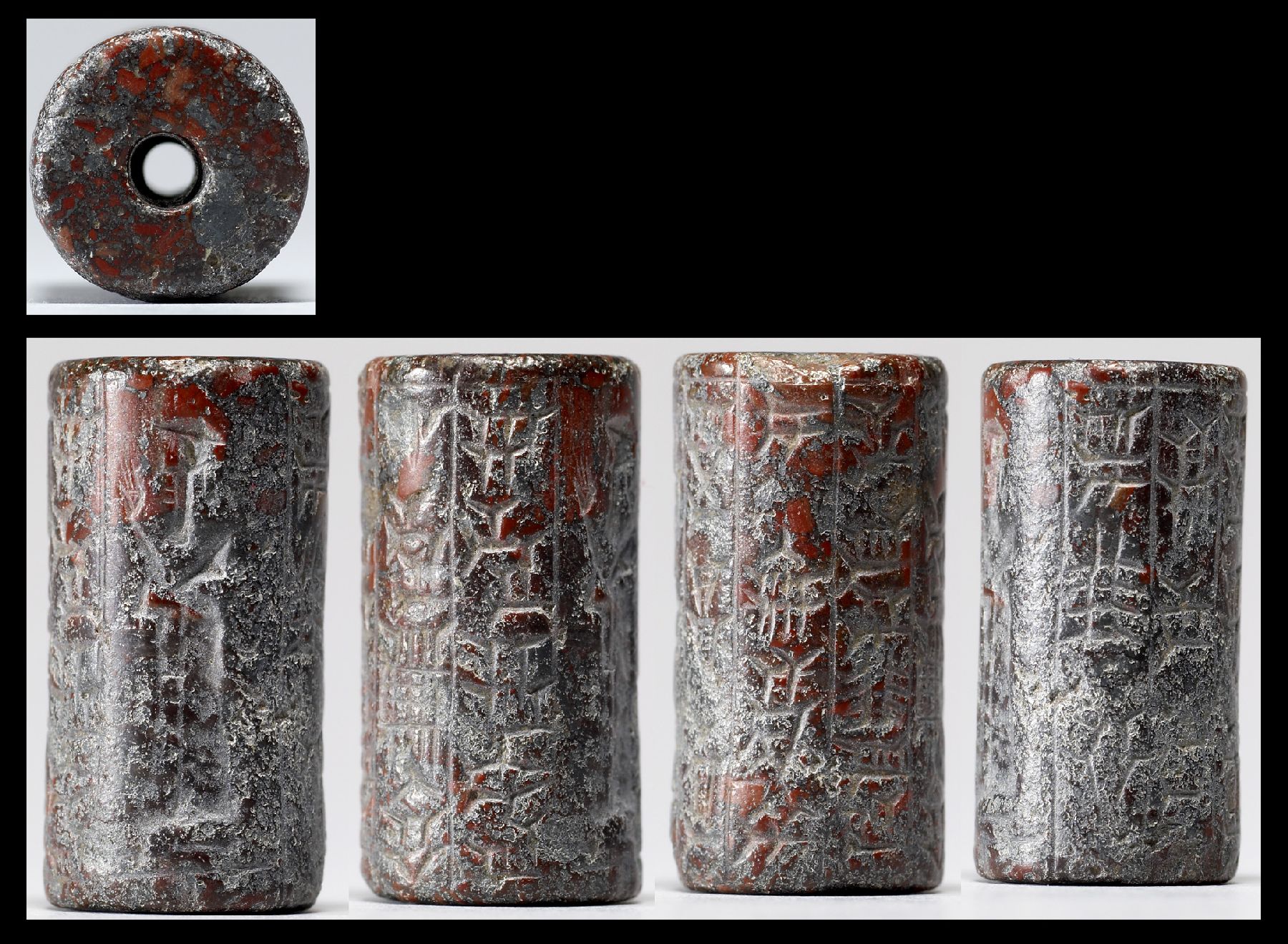Cylinder Seal with a Standing Worshipper and Inscription
(Ancient Near East )
The Kassites were a people from the northwest who installed themselves as the rulers of southern Mesopotamia, unified under the name of Babylonia. They adopted much of its culture, including the cylinder seal. Their seals tend to be tall and thin and often devote much of the surface to inscriptions of prayers. This example features a standing figure with raised arms, and a cuneiform inscription in seven registers.
Cylinder seals are cylindrical objects carved in reverse (intaglio) in order to leave raised impressions when rolled into clay. Seals were generally used to mark ownership, and they could act as official identifiers, like a signature, for individuals and institutions. A seal’s owner rolled impressions in wet clay to secure property such as baskets, letters, jars, and even rooms and buildings. This clay sealing prevented tampering because it had to be broken in order to access a safeguarded item. Cylinder seals were often made of durable material, usually stone, and most were drilled lengthwise so they could be strung and worn. A seal’s material and the images inscribed on the seal itself could be protective. The artistry and design might be appreciated and considered decorative as well. Cylinder seals were produced in the Near East beginning in the fourth millennium BCE and date to every period through the end of the first millennium BCE.
Inscription
Provenance
Provenance (from the French provenir, 'to come from/forth') is the chronology of the ownership, custody, or location of a historical object. Learn more about provenance at the Walters.
Henry Walters, Baltimore, [date and mode of acquisition unknown]; Walters Art Museum, 1931, by bequest.
Conservation
| Date | Description | Narrative |
|---|---|---|
| 6/4/1968 | Treatment | other |
| 3/20/1974 | Examination | other |
Geographies
Mesopotamia (Place of Origin)
Measurements
H: 1 1/4 x W: 5/8 x Diam: 5/8 in. (3.1 x 1.6 x 1.6 cm)
Credit Line
Acquired by Henry Walters
Location in Museum
Not on view
Accession Number
In libraries, galleries, museums, and archives, an accession number is a unique identifier assigned to each object in the collection.
In libraries, galleries, museums, and archives, an accession number is a unique identifier assigned to each object in the collection.
42.428












